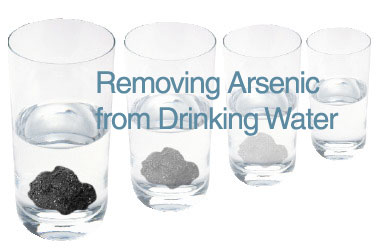 |
|  |
Innovations
|
 Removing Arsenic from Drinking Water
Removing Arsenic from Drinking Water Karen Breslin Abstract
U.S. researchers are developing technologies that may someday protect millions of people worldwide whose drinking water is tainted with arsenic. Arsenic is released into water from soil and rock erosion, and is also a by-product of industrial processes including semiconductor manufacturing, petroleum refining, and mining and smelting operations. Most people in the United States are exposed to arsenic through food or drinking water. It is estimated that 150 community water systems do not meet the current drinking water standard for arsenic of 50 micrograms per liter (µg/l) . The EPA has determined that exposure to high levels of arsenic increases the risk for skin cancer, and data also suggest that arsenic may affect the vascular system in humans and may be associated with the development of diabetes. One new technology, the AsRT, appears to be more cost-effective than traditional methods in removing arsenic to below a detection limit of 1 µg/l. This method is also inexpensive enough that it might someday be used on drinking water wells in less developed countries such as Bangladesh, where arsenic appears in groundwater at levels around 500 µg/l. Scientists are also exploring modifications to such traditional treatments as the coagulation/filtration process, which uses uses iron to react with arsenic to create a solid precipitate, and the anion exchange process, which involves swapping anions of arsenate from contaminated water with innocuous ions such as chloride.
The full version of this article is available for free in HTML format. |
|
|
 |
|

